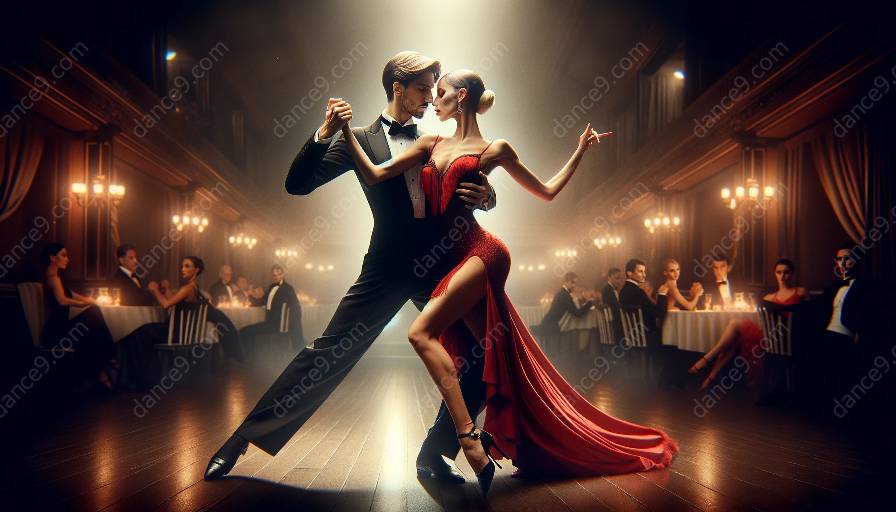Tango is a passionate and expressive dance form that incorporates elements of rhythm and musicality, captivating both dancers and audiences with its sensual movements and emotive music. To gain a deeper insight into how tango creates an immersive dance experience through rhythmic and musical elements, it's essential to explore the key components that contribute to its unique charm.
Understanding Rhythm in Tango
Rhythm is the heartbeat of tango, driving the movement and intensity of the dance. Tango music is characterized by its distinct rhythm, often featuring a 2/4 or 4/4 time signature with a strong emphasis on the downbeat. The interplay of rhythmic patterns, syncopations, and pauses in the music creates an intricate tapestry of sound that dancers fluidly translate into their movements.
When dancing tango, the dancers' steps are intricately woven into the rhythmic structure of the music, accentuating the beat with precise footwork and pauses that heighten the sense of anticipation and release. The connection between the dancers, as well as their connection to the music, is paramount as they navigate the ebb and flow of the rhythm, creating a captivating interplay of movement and sound.
Expressing Musicality through Movement
While rhythm provides the framework for tango, musicality infuses the dance with emotion and interpretation. The melodic and rhythmic variations in tango music offer dancers a rich palette of expression, allowing them to convey a range of emotions and narratives through their movements. Musicality in tango is about interpreting the nuances of the music and giving it physical form through the interplay of steps, pauses, and gestures.
Dancers immerse themselves in the music, translating its dynamics, phrasing, and mood into their movements, creating a symbiotic relationship with the music that enhances the storytelling aspect of the dance. Whether it's the staccato notes of the bandoneon, the lyrical passages of the violin, or the driving beat of the percussion, tango dancers breathe life into the music through their movements, intertwining their steps with the emotive contours of the music.
Integrating Rhythm and Musicality in Tango
At the heart of tango lies the seamless integration of rhythm and musicality, where dancers synchronize their movements with the musical patterns, infusing each step with dynamic expression and sensitivity. The dialogue between the dancers, the music, and the space they inhabit creates a deeply immersive experience that transcends the physical act of dancing, inviting participants and spectators alike into a world of heightened sensuality and emotional resonance.
By understanding the interplay between rhythm and musicality in tango, dancers can cultivate a deeper connection to the music and develop a heightened sense of expression and interpretation in their movements. This synergy between rhythm and musicality elevates tango from a mere sequence of steps to a profound and evocative form of artistic expression.
Join Our Tango Dance Classes
If you're captivated by the allure of tango and eager to delve into its rhythmic and expressive dimensions, we invite you to join our tango dance classes. Our experienced instructors will guide you through the intricacies of tango, helping you cultivate a strong foundation in rhythm and musicality while honing your skills in this captivating dance form.
Embark on a journey that fuses passion, technique, and artistic sensibility, and immerse yourself in the enchanting world of tango. Join us as we unravel the secrets of tango, and let the rhythm and musicality inspire your dance movements.













































































